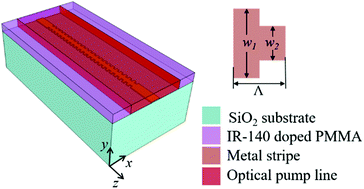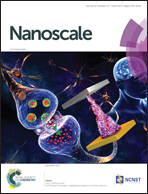Single-mode surface plasmon distributed feedback lasers
Abstract
Single-mode surface plasmon distributed feedback (DFB) lasers are realized in the near infrared using a two-dimensional non-uniform long-range surface plasmon polariton structure. The surface plasmon mode is excited onto a 20 nm-thick, 1 μm-wide metal stripe (Ag or Au) on a silica substrate, where the stripe is stepped in width periodically, forming a 1st order Bragg grating. Optical gain is provided by optically pumping a 450 nm-thick IR-140 doped PMMA layer as the top cladding, which covers the entire length of the Bragg grating, thus creating a DFB laser. Single-mode lasing peaks of very narrow linewidth were observed for Ag and Au DFBs near 882 nm at room temperature. The narrow linewidths are explained by the low spontaneous emission rate into the surface plasmon lasing mode as well as the high quality factor of the DFB structure. The lasing emission is exclusively TM polarized. Kinks in light–light curves accompanied by spectrum narrowing were observed, from which threshold pump power densities can be clearly identified (0.78 MW cm−2 and 1.04 MW cm−2 for Ag and Au DFB lasers, respectively). The Schawlow–Townes linewidth for our Ag and Au DFB lasers is estimated and very narrow linewidths are predicted for the lasers. The lasers are suitable as inexpensive, recyclable and highly coherent sources of surface plasmons, or for integration with other surface plasmon elements of similar structure.



 Please wait while we load your content...
Please wait while we load your content...